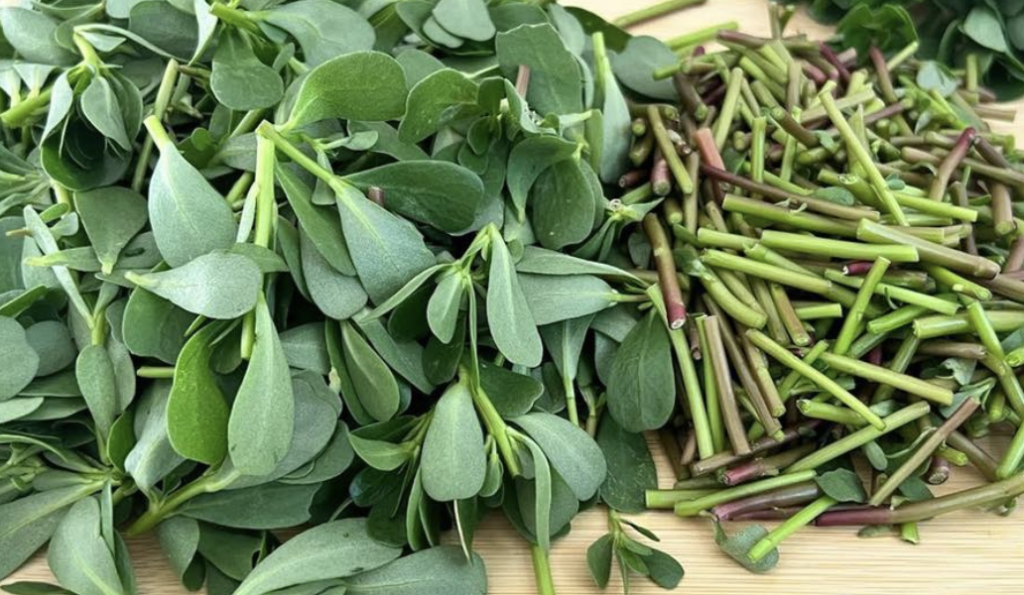Purslane (Portulaca oleracea) is often overlooked as a common weed, but it’s actually a nutritional powerhouse, packed with omega-3 fatty acids, vitamins (especially A and C), minerals, and antioxidants. Thriving in various climates and conditions, purslane is both versatile and resilient, making it a valuable addition to your diet. Here’s how to identify purslane and incorporate it into your meals with a simple, nutritious recipe.
Identifying Purslane
Characteristics:
- Leaves: Small, oval-shaped, and fleshy, resembling a jade plant’s leaves.
- Stems: Thick, reddish, and succulent.
- Flowers: Tiny yellow flowers that only open on sunny mornings.
- Growth Habit: Grows close to the ground and forms dense mats in gardens, fields, and cracks in sidewalks.
Foraging for Purslane
Purslane can be found in gardens, fields, and along roadsides. Choose plants in areas free from chemical pesticides and away from roads to avoid contamination. Harvest early in the morning when the leaves are most succulent.
Culinary Uses
Purslane can be eaten raw or cooked, offering a slightly lemony and salty flavor. It’s great in salads, sandwiches, and soups. Here’s a simple recipe to try:
Recipe: Purslane and Tomato Salad
Ingredients:
- 2 cups fresh purslane, leaves and tender stems
- 1 cup cherry tomatoes, halved
- 1/4 cup red onion, thinly sliced
- 2 tablespoons olive oil
- 1 tablespoon apple cider vinegar
- Salt and pepper to taste
- Optional: Feta cheese or olives for garnish
Instructions:
- Prepare the Purslane: Rinse thoroughly under cold water and pat dry.
- Combine the Salad Ingredients: In a large bowl, mix purslane, cherry tomatoes, and red onion.
- Make the Vinaigrette: Whisk together olive oil, apple cider vinegar, salt, and pepper in a small bowl.
- Dress the Salad: Pour the vinaigrette over the salad and toss gently to coat.
- Serve: Garnish with feta cheese or olives if desired. Serve immediately.
Nutritional Benefits
Purslane is rich in omega-3 fatty acids, Vitamin A, Vitamin C, magnesium, and potassium, promoting heart health, brain function, and reducing inflammation.
Purslane is a versatile and nutritious addition to your diet, whether foraged in the wild or cultivated in your garden. Embrace this resilient plant and enjoy its flavor and health benefits in your culinary creations!
